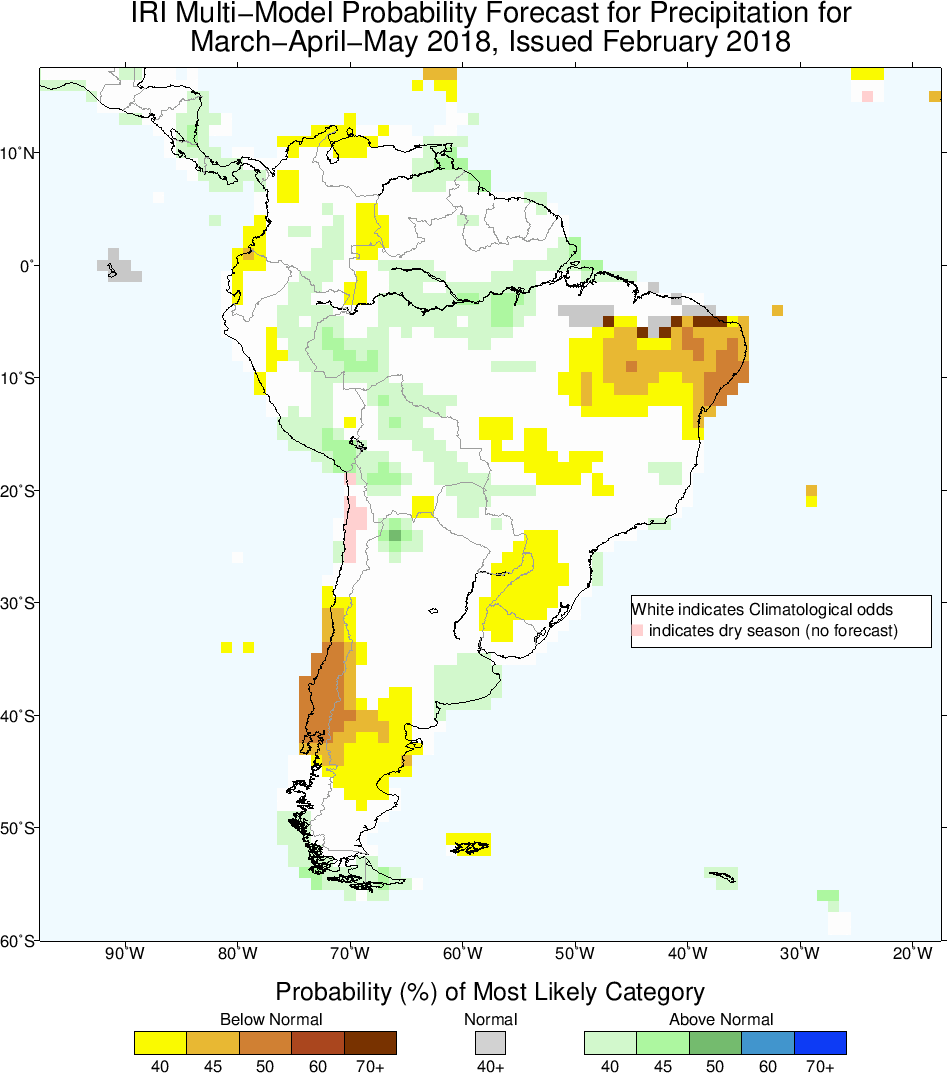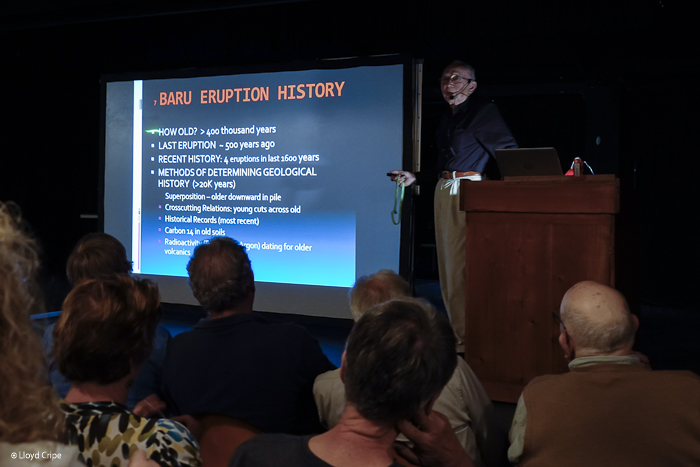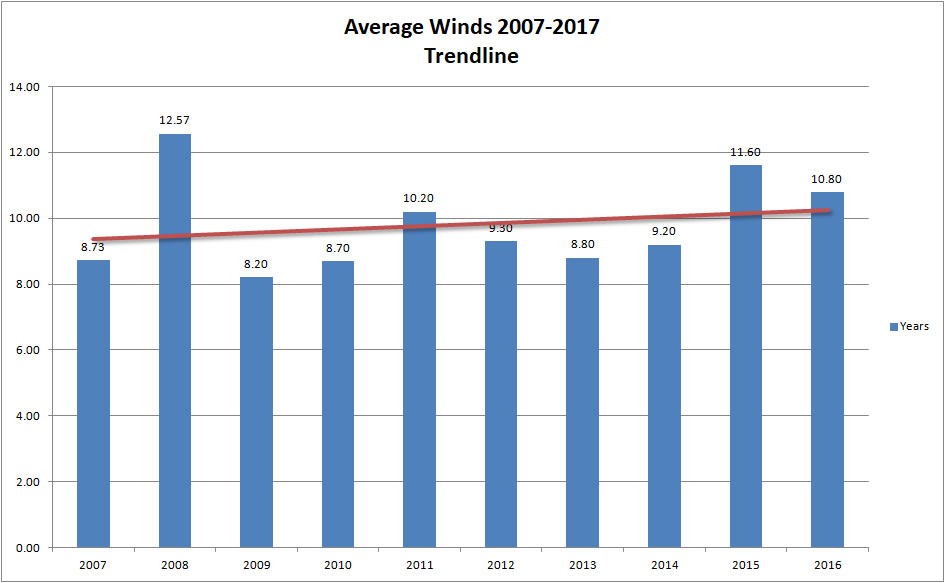| March 10, 2018 | No.107 |
February 2018
(Back Issues Here)
February 2018 is over and here are the rainfalls totals for the month. At the Palmira Station we had 0.01 inches of rain. That is pretty close to zero!
The reports from around the District of Boquete for February are in the table below:
Rainfall for February 2018 |
|||
Area |
Contributors |
February |
Total 2018 |
El Santuario |
Terry Zach |
1.56 |
7.08 |
Jaramillo Arriba |
Steve Sarner |
0.36 |
8.34 |
Jaramillo Abajo |
Don Berkowitz |
0.0 |
1.43 |
Jaramillo Abajo |
Bobi McGann |
0.05 |
3.06 |
El Salto Arriba |
Rodrigo Marciacq |
0.37 |
3.64 |
Brisas Boquetenas |
Austin Perry |
0.0 |
1.10 |
Los Molinos |
Sela Burkholder |
0.0 |
2.56 |
Santa Lucia |
Paula Litt |
0.0 |
n/a |
Lucero (Cielo Paraiso) |
Michael Mullin |
0.0 |
2.61 |
Palmira Abajo |
Betty Gray |
0.0 |
0.56 |
Palmira Arriba |
Lloyd Cripe |
0.01 |
0.85 |
n/a = not currently available but will be posted when available |
|||
Basically there was little to no rain for the month in the Boquete District. I think the month can be summarized as dry and windy.
Compared to previous years from 2007 to 2018 it was a drier year here at the Palmira Arriba Station. The average over the years that I have recorded is 1.21 inches in the month of February. The mean has been 1.21 with a Standard Deviation of 1.66 and a range of 0.00 to 4.96 inches. You can check out our Palmira Station rain records for the last 11 years at this address.
The upside is that we have had a lot of clear skies and sun. It has been windy which is usually the case during the dry season. Our monthly average winds were 11.4 mph with a max wind speed of 30mph.
I often hear this time of year that "it seems like we are getting more wind than usual." Is this true?
February and March are always windy months in Boquete. Below is a graph of our average annual winds from 2007 to 2017. A trend line shows an upward slope but the numbers show variation from year to year and there is only a slight increase if any. I don't think this argues strongly for much of an increase. Also a close inspection of our maximum winds in February over the years shows little change and it looks as if February 2018 winds yielded less maximum speeds than in many previous years. The bottom line is that Boquete is usually windy during the dry season! We have to get used to it if we want to live in Paradise.
The latest ENSO Cycle Report is now saying that "La Niña conditions are present. Equatorial sea surface temperatures (SSTs) are below average across the central and eastern Pacific Ocean. A transition from La Niña to ENSO neutral is likely during the Northern Hemisphere spring (~55% chance of ENSO neutral during the March - May season)."
If you want to learn more about El Niño, this is a link to a good web site to understand the phenomenon and its effects on our climate and weather.
The IRI (International Research Institute for Climate and Society) (select South America from the Region menu) is reporting the following precipitation predictions for March-April-May of 2018. Note a prediction of slightly above normal precipitation for our area (green) but generally mixed for the various regions of South America.

ETESA's, hydrology and meteorology section is predicting that most parts of Chiriqui will have generally normal levels of precipitation for the month of March 2018. You can read their report and check out the details for March 2018 in the documents section at this link.
On February 27 at the Tuesday Meeting, Dr. Paul Myers, a visiting retired geology professor now living in Vermont, presented his talk on Volcan Baru and what we can expect when it erupts again. The talk was well attended and some were even turned away because of a full room. Main points presented included the fact that the Volcano has an eruption cycle of about every 400 years and it has now been 500 years since the last one. Active volcanoes are like Hard drive failures. It isn't a question of whether or not one will happen, it is a question of when will it happern? It was reassuring to hear Dr. Myers say that the volcano will give off lots of pre-eruption notice over the course of a year or two before an eruption. It would not be a sudden surprise explosion event. We all took a sigh of relief in hearing this. As far as where to go if there is an eruption, if staying near the volcano it is best to go north and uphill to avoid Lahars and other downwind effects. Heading south to the David area would also be far enough to avoid the acute effects. It is highly recommended that you sell your real estate prior to the eruption! Here is a photo of Dr. Myers in action.

A big thanks to Dr. Myers for his interest in our geology and for sharing his knowledge with us. If you missed the talk there are plans to video the talk and make it available to whomever. Keep your eyes peeled for the announcement.
Dr. Myers highly recommends a comprehensive study of Volcan Baru done by a USGS team in 2007 (David R. Sherrod, James W. Vallance, Arkin Tapia Espinosa, and John P. McGeehin). You can download the report from our web site at this link. I posted this report shortly after it was published and made a link available in the links section of this web site. I wonder how many of you found it in 2008? If you read it, you will know almost as much as Dr. Myers but he understands it.
Be hopeful. We may get a bit of rain in March and the winds will eventually die down. Smile at the sun and use your umbrella as UV protection. In case you haven't noticed, the sun radiates a lot at 8 degrees from the equator!
Lloyd Cripe

